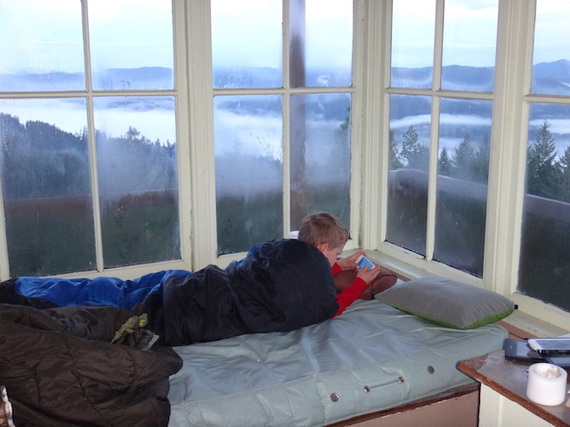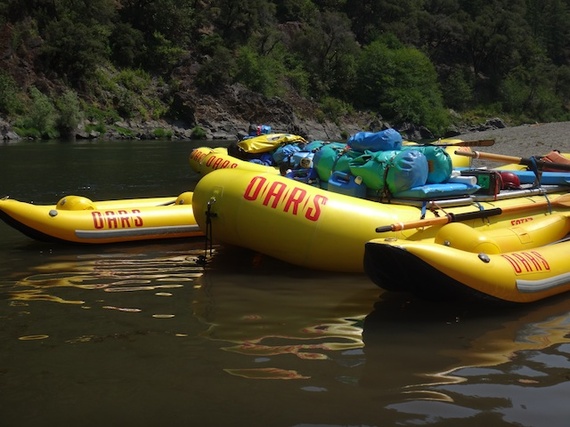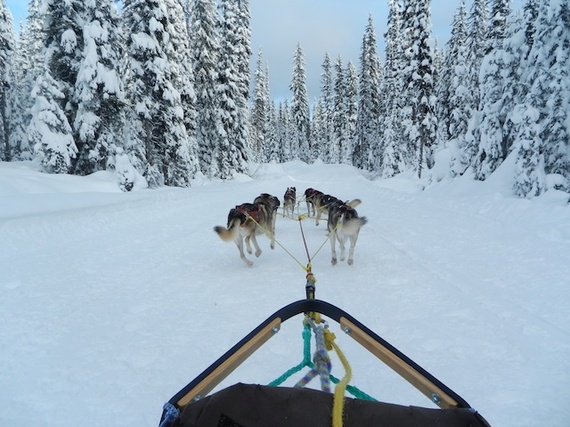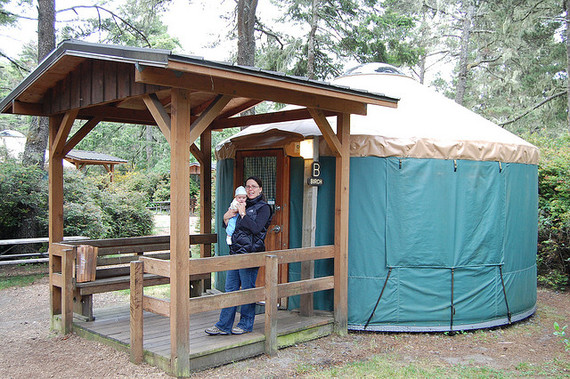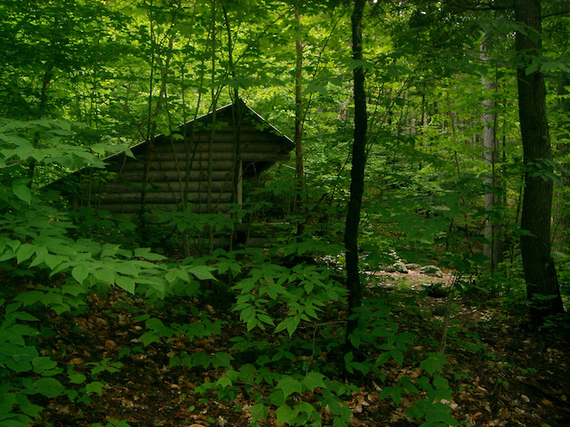Need a home base for your Zion National Park adventure? How about a launching point for fall and winter outdoor exploration of Southern Utah? St. George fits the bill, with red rock canyons, mountain bike and hiking trails, and Virgin River. Families can bike, rock scramble, discover new parks, and even get some culture in St. George. Here’s what not to miss, awaiting discovery just outside your hotel room door.
Outdoor exploration from St. George Utah with kids:

Zion National Park:
Without a doubt, Zion National Park is St. George’s biggest draw, and for good reason. And guess what? It’s even better in the off-season. Explore Zion in the fall and winter to escape the crowds, and don’t worry, you can still hike the Narrows in winter. LINK From St. George, drive to Springdale, then park at the main visitor’s center and shuttle into the park from there during the busier seasons, making sure to hop on and off along the way for day hiking opportunities.
Hike Washington County:
When Zion gets crowded, head to the following adjacent trails:
Red Cliffs Desert Reserve: Here, you can try the Babylon Arch Trail, where the sandy, open terrain transports you to another planet (think Mars). It’s only a mile and change, so provided you time your hike to avoid the peak heat of the day, you’ll be fine. You can also head to the Elephant Arch in the reserve for a longer, sandier hike of almost four miles. If the kids want to dabble in a little of Southern Utah’s famed canyoneering on a trail that’s still just over a mile long, head to the Red Reef Trail, where they can do some scrambling as you hike. If you want to make a day of it and really get your hike on, the Red Reef Trail is part of the Cottonwood Canyon Wilderness system (allowing you to do an almost six mile loop instead).
Snow Canyon State Park: For us, the most intriguing hike in Snow Canyon was the Pioneer Names Trail, where yes, you can observe the names etched into the rock by early Mormon pioneers. I guess if graffiti is old enough, it’s historical! The north trail head to the site provides the closest access, but it’s a short trail either way. You can also hike to the Petrified Dunes in Snow Canyon, which is located in the center of the park, offering amazing views once you’re at the site of the petrified Navajo Sandstone cliffs.
Need to stay closer to town? Head to Dixie Red Rock, a.k.a. Pioneer Park, overshadowing St. George. It’s fun to pack a picnic and watch the avid mountain climbers who flock here.
Additional tip: Have time to go further afield? Cedar Breaks National Monument doesn’t get enough love! Located about an hour and a half away near Brian Head, Cedar Breaks provides fantastic canyons and forest to explore. In winter, this is a snowmobiling mecca, and in summer, this paradise at 10,000 feet is ideal for night sky gazing, hiking, and climbing.
Cycle and mountain bike:

The greater St. George area has over 60 miles of bike paths and literally hundreds of miles of single track and slick rock trails. Beginner mountain bikers who don’t want to be bored need to head to Barrel Roll, which is as fun as it sounds. Located in the Santa Clara River Reserve, Barrel Roll delivers views and twists and turns while not being too steep to handle. From there, advance to the Wire Mesa Trail, located just outside Zion. This single track is more mountainous (with a bit of shade as a bonus) and offers views. If you’re an expert, you have a slew of picks, the most epic undoubtedly Nephi’s Twist at Hurricane Cliffs, a steep, technical track that frankly, is way above my ability level (I’ll leave it to the experts). And don’t forget about the state parks for mountain biking bliss: Snow Canyon State Park is a good option (just double check that bikes are allowed on the trail of your choice.)
Weather not cooperating? Go museum-hopping:
While St. George enjoys near endless sunshine, there will be those days when the skies cloud up. Discover the early Jurassic dinosaur tracks at St. George’s Dinosaur Discovery Site at Johnson Farm, then head to the Rosenbruch Wildlife Museum nearby. Young kids will love the St. George Children’s Museum where they have the run of twelve rooms of hands-on exhibits where they can lose themselves in imaginative play.
Enjoy the water:
From late spring to early fall, boating and swimming is an option, thanks to Southern Utah’s warm water and air temperatures. Quail Creek State Park, Gunlock State Park, and Sand Hollow State Park all offer boating and swimming. The Quail Creek and Sand Hollow reservoirs are great for fishing, too (don’t forget to get all boats, and even tubes, inspected first). You can also ride the dunes of Sand Mountain in an off-highway vehicle at Sand Hollow State Park.

Want a different experience? The Virgin River cuts through the red rock landscape of Springdale, providing the perfect way to cool off. To escape the summer masses, head to Falls Park (Sheep Bridge). You’ll enjoy sandy beaches and perfect jump-off rocks (always check depth before jumping!). Families can find shallow pools for kids, and the more daring can find rapids to ride.
Want more space to yourself? As long as your vehicle has the clearance of an SUV, you can bump your way along a dirt road to Toquerville Falls, where an easy hike lands you at the base of a desert oasis. You’ll want your camera ready for these cascading falls over the rock, but you can take a dip, too.
This post is written in partnership with Visit St. George and Travel Mindset. All opinions remain my own.





























